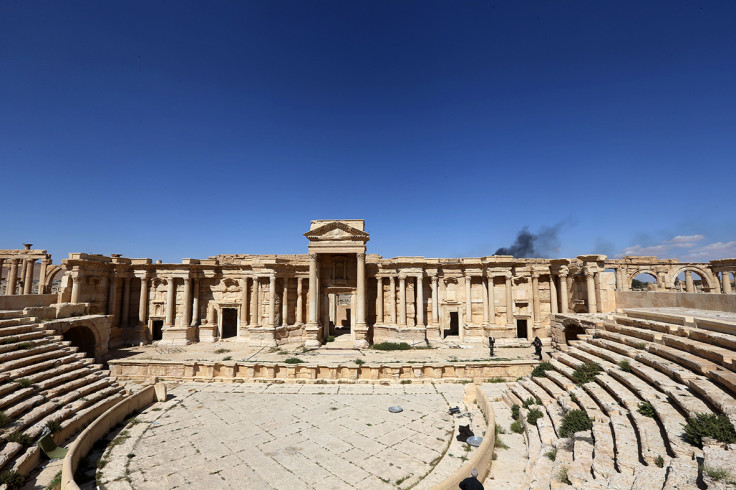Isis blows up front of Palmyra amphitheatre as destruction of ancient ruins resumes
One monument was also destroyed by the militant group in the 2,000-year-old cultural site.
The Islamic State (Isis) has restarted its destruction of ancient ruins in the Syrian city of Palmyra, vandalising the front of a Roman amphitheatre and blowing up another monument.
On 20 January, Syrian state news reported "the facade" of the second-century amphitheatre and the tetrapylon, a cubic-shaped ancient Roman monument, were blown up by Isis. There was no indication of exactly when the monuments were blown up.
The Associated Press reported that the destruction of the monuments was collaborated by opposition groups. After recapturing Palmyra last December, Isis has once again started to use the ruins for propaganda purposes in audacious acts of iconoclasm.
Yesterday (20 January) observers reportedThe Islamic State (Isis/Daesh) has beheaded 12 people in Palmyra, including teachers, in killings reminiscent of the May 2015 mass executions of 25 soldiers in the ancient Syrian city.
Palmyra, with its iconic 2,000-year-old ruins, has become one of most potent symbols for the ebb and flow of power in Syria's six-year civil war.
In May 2016 Russia put on a concert at the Roman ruins at Palmyra as a symbol of its victory against IS. The concert followed the Kremlin announcing a full-scale withdrawal from the country saying all Russia's goals had been met.
Despite Russia's stated intention to withdraw, Moscow continued as the principal backer of the Assad regime along with Iran and the Lebanese Shia Hezbollah militia.
Despite a number of victories for the Assad regime, IS has been able to recapture Palmyra and, as the most recent round of executions would suggest, once again impose its regime of terror.

As they re-entered Palmyra last December, the militants seized Russian arms including 30 tanks, large quantities of surface-to-surface Grad missiles, ammunition and tanks shells.
Russia claimed IS was able to overrun Syrian government forces with reinforcements from Mosul. Footage disseminated by IS at the time showed its forces standing next to abandoned Russian tanks and armoured personnel carriers at security checkpoints.
© Copyright IBTimes 2025. All rights reserved.






















